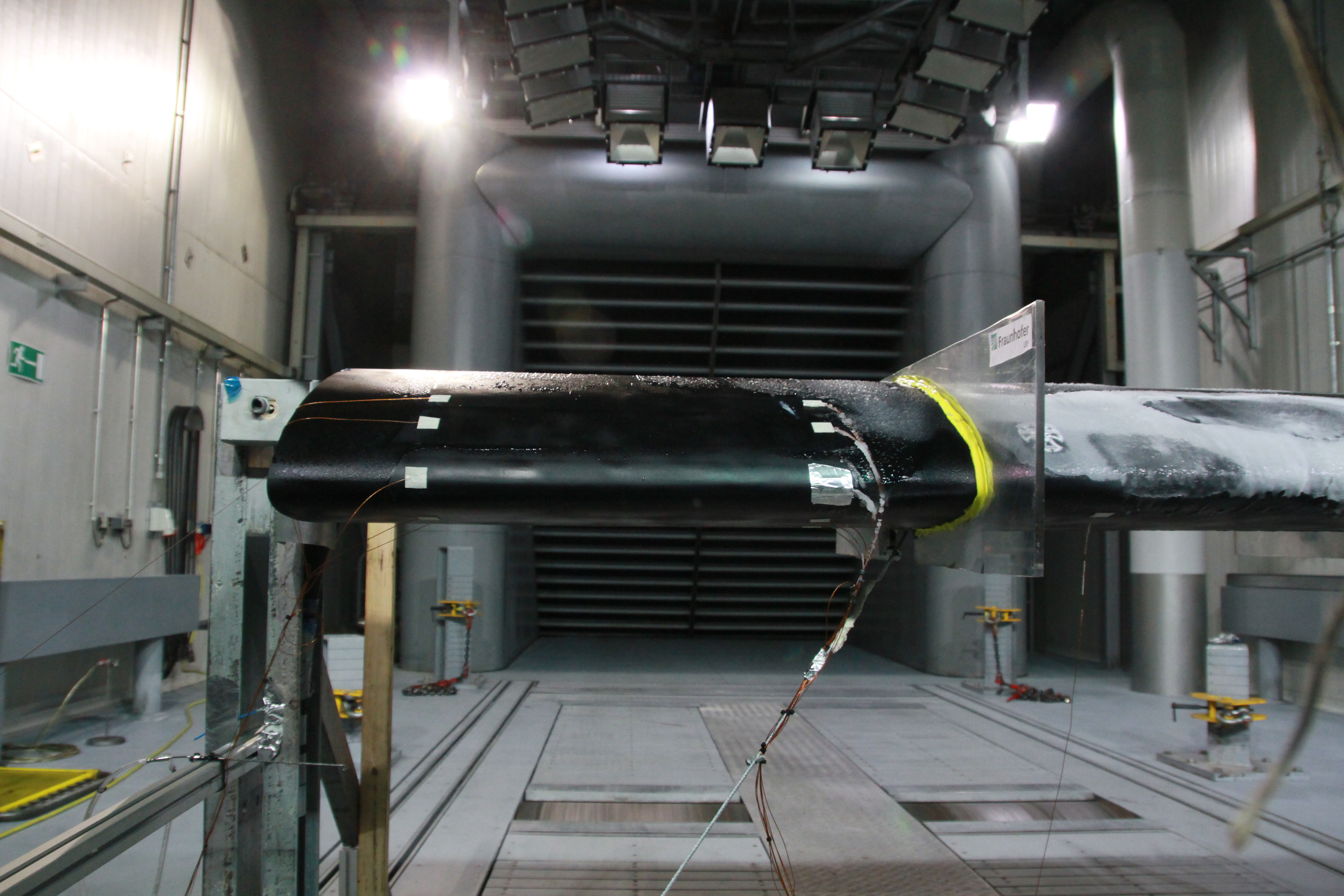Fraunhofer LBF developed, manufactured and tested an innovative ice protection system for airplanes, based on Carbon Nano Tubes (CNT). The tests were conducted in a climatic wind tunnel at temperatures as low as -18° C. In total, three leading edge segments of the wing were examined. Two were equipped with the non-metallic heating system in different configurations, one segment, which served for reference purposes, did not have a heating system. These tests crowned several years of development and improvement and were based on, among other factors, the simulation of thermal, electrical and aerodynamic conditions. The wind tunnel tests showed a promising performance, both in the de-icing mode (with an artificially iced wing) and in the anti-icing mode (which prevents icing during a simulated flight through clouds at low temperatures).
Ice Protection
Ice protection with structured nano-material
Simulation, design, manufacturing and testing of the ice protection system
Work on the CNT-based ice protection system started about six years ago. That was when a CNT layer was integrated into a composite fiber structure and used as electric resistance heating for the first time at Fraunhofer LBF. In the course of the following years, the basis material with an ever lower resistance became commercially available – currently, a heating temperature of up to 120° C can be achieved at room temperature. The contacts and the thermal and electrical insulation of the heating zones were further improved over time. After experimental determination of parameters for simulation, the heating for a leading edge was optimized with the help of the computer. Since the required heating power varies depending on the position on the leading edge, employing different heating zones is an advantage in terms of energy efficiency. This classic optimization process was implemented by means of computerized simulation. For this purpose, icing-related parameters such as surface temperatures, droplet size or water content were taken into account, as well as parameters concerning the flight conditions such as speed and air temperatures, and also material parameters such as thermal capacities and heat transfer coefficients. Then, the optimum number and distribution of heating zones was determined for the wind tunnel tests. The two variants that were experimentally analyzed differ in some details. In one model, different voltages are applied to the heating zones in order to obtain a uniform surface temperature. In the other model, the heating zones differ in size and resistance, thus enabling operation at the same voltage in order to obtain an almost homogeneous surface temperature, which reduces the complexity of the electric system.
 Fraunhofer Institute for Structural Durability and System Reliability LBF
Fraunhofer Institute for Structural Durability and System Reliability LBF
